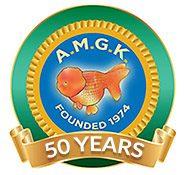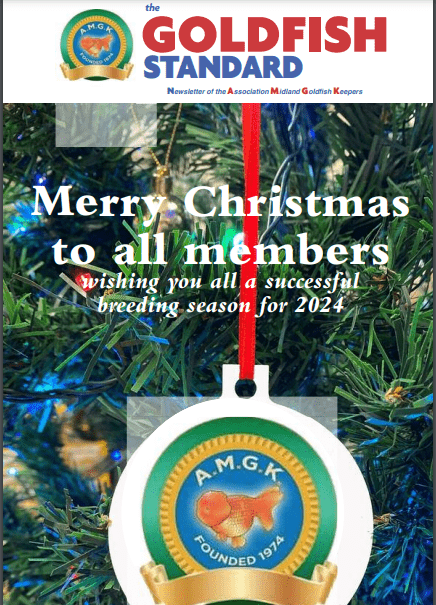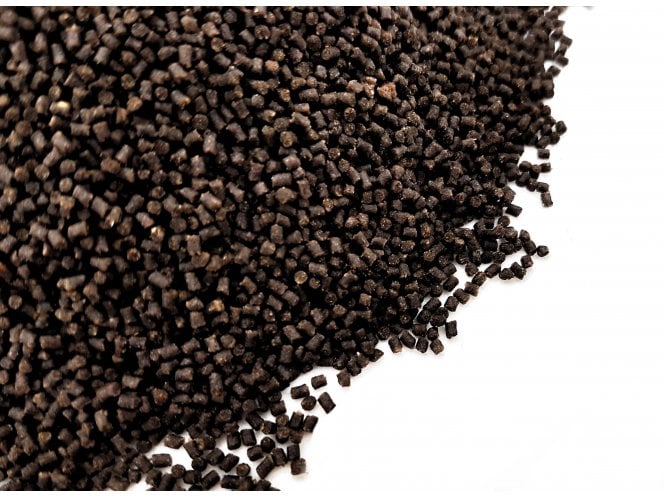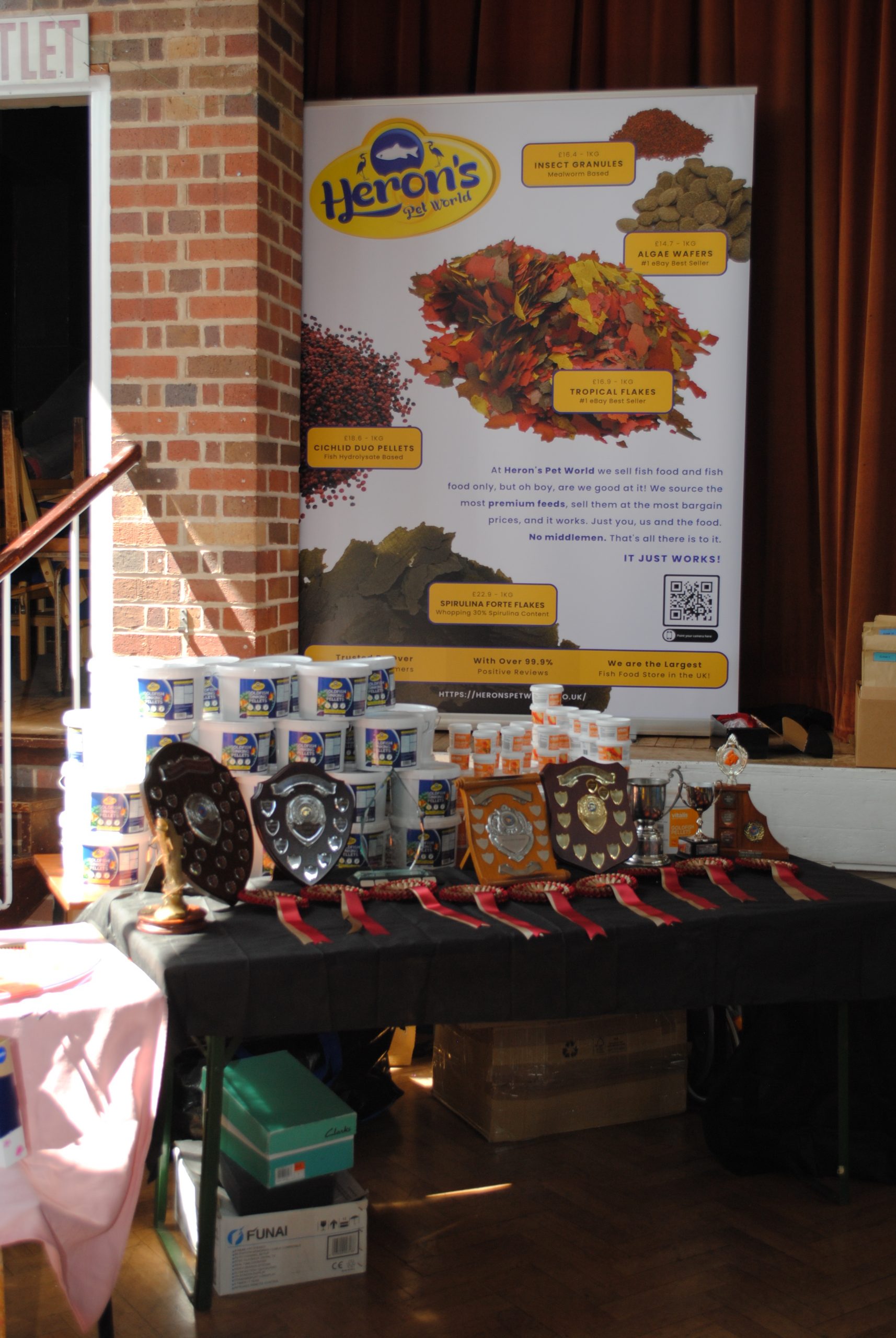Conditioning for Breeding
As the year progresses our plans turn to breeding for the season ahead; and while many in the club have tried and tested routines and strains of Goldfish that are predictable, the process for breeding can still be a challenge. Many breeders aim to produce youngsters in time the end of August that are competitive in characteristics and size for the show bench. It would be hard to argue that some of us struggle to get youngsters ready for the national show in October. There are obviously many obstacles to overcome to achieve the goal of showing fish in the year you breed, not least are, the cost of electricity, the weather, moon cycles, nutrition, and conditioning of the fry.

However, the first obstacle is an early enough breeding that is, while not from females carrying eggs into winter, early enough to give the breeder time to condition the fry for showing. So before breeding we must consider the conditioning of the fish we aim to breed from.
Before breeding, it’s recommended to start conditioning your goldfish 4 to 8 weeks prior. This period is used to increase the overall health and vitality of the fish and to encourage egg production in females.
A balanced diet for goldfish should consist of high-quality protein, carbohydrates, and fats. Protein should make up about 35-40% of their diet, while carbohydrates should make up about 20-30%. Fats should make up about 5-10% of their diet. Key amino acids, such as lysine and methionine, are important for growth and reproduction and should be included in their diet.
Mineral and vitamin requirements for goldfish include calcium, phosphorus, vitamin A, vitamin D3, and vitamin C. These nutrients are essential for strong bones and overall health and can be provided through a balanced diet or through dietary supplements such as Repashy or bottled aquarium soluable vitamins
It’s recommended to feed your goldfish a variety of live and frozen foods, such as brine shrimp, bloodworms, daphnia, and krill. Live foods, such as brine shrimp, provide essential vitamins and minerals for your goldfish, while worms, such as bloodworms, also provide high-quality protein and essential amino acids.
Worms are a popular and nutritious food for goldfish and can provide essential nutrients for their growth and reproduction. The nutritional breakdown of the commonly sourced types of worms for feeding goldfish are:
- Bloodworms: Bloodworms are high in protein, with a protein content of up to 60% or more. They contain essential amino acids that are important for goldfish growth and reproduction. They are also a reliable source of vitamins and minerals, including iron, calcium, and phosphorus.
- Blackworms: Blackworms are high in protein, with a protein content of up to 60% or more. They contain essential amino acids, lipids, and are a good source of vitamins and minerals, including iron, calcium, and phosphorus.
- Earthworms: Earthworms are high in protein, with a protein content of up to 50% or more. They contain essential amino acids, lipids, and minerals, including iron, calcium, and phosphorus. They are also a useful source of vitamins, including vitamin A and vitamin C.
- Mealworms: Mealworms are high in protein, with a protein content of up to 50% or more. They contain essential amino acids, lipids, and minerals, including iron, calcium, and phosphorus. They are also a thorough source of vitamins, including vitamin A and vitamin C.
It’s important to note that the nutritional content of worms can vary based on the type of worm, their diet, and the conditions in which they were raised. It’s recommended to provide a variety of distinct types of worms to ensure that your goldfish receive a balanced diet of essential nutrients.
Many breeders also feed Krill, Daphnia or Moina, brine shrimp or mysis, many of these provide the nutrition required for breeding. The exact amounts of essential fatty acids, vitamins, and minerals such as iron, calcium, and phosphorus in each food can vary slightly depending on the source and preparation methods. However, here are some general guidelines:
- Krill: Krill are rich in essential fatty acids, vitamins, and minerals such as iron, calcium, and phosphorus. They can contain up to 60% protein and are a valuable food source for goldfish breeding.
- Daphnia Magna: Daphnia Magna contain approximately 40% protein and are a reliable source of essential fatty acids and vitamins. They also contain moderate levels of minerals such as iron, calcium, and phosphorus.
- Moina: Moina contain approximately 40% protein and are a useful source of essential fatty acids, vitamins, and minerals such as iron, calcium, and phosphorus.
- Brine Shrimp: Brine shrimp contain approximately 40% protein and are a thorough source of essential fatty acids and vitamins. They contain moderate levels of minerals such as iron, calcium, and phosphorus.
- Mysis: Mysis contain approximately 40% protein and are a good source of essential fatty acids, vitamins, and minerals such as iron, calcium, and phosphorus.
It is advisable to use reputable source for all fish food, who will be able to provide more specific nutritional information.
Let us know your routines and plans for feeding ahead of breeding.









